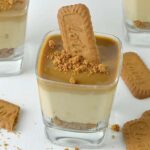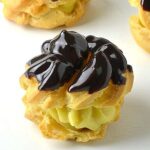
Over the past few years, there has been a growing interest in using edible flowers to add a unique and visually appealing touch to dishes. Edible flowers come in a wide range of colors, shapes, and sizes, making them a beautiful and flavorful addition to many different types of dishes.
This trend works beautifully with the renewed interest in gardening, cooking, and homesteading stemming from the events of 2020.
This article will outline a few stunning ways to incorporate edible flowers into your favorite foods, including which flowers to use and some best practices to keep everyone healthy and happy.
Decorating Cakes with Edible Flowers
One of the best ways to incorporate flowers into cooking and baking is to use them for cake decoration. Adding your favorite flowers on a birthday cake adds a touch of luxury and refinement that highlights the specialness of the occasion.
Choose a variety of small, colorful flowers like pansies, violas, and primroses, and place them on top of the cake. Arrange them in a circle or sprinkle them across the top for a fun and whimsical look.
You can also use larger flowers like roses, peonies, or dahlias to create floral decorations on the sides of the cake. Use a small paintbrush to apply a thin layer of edible glue to the back of each flower, then attach them where you like.
You can also decorate with your favorite flower — just make sure it’s non-toxic and organic, and add a layer between the cake and the flowers to be safe (i.e., a piece of parchment paper).
Alternatively, you can incorporate edible flowers into the recipe. Make floral buttercream by adding chopped edible flowers to your frosting for a pop of color and flavor. Try using lavender, rose petals, or chamomile flowers. Simply chop the flowers finely and add them to your frosting during the mixing process.
Tips for Decorating Cakes with Flowers
When using edible flowers in cake decorating, it’s important to match the flavor of the flowers to the cake. For example, if you’re making a lemon cake, you may want to use flowers with a citrusy flavor, like chamomile. Alternatively, if you’re making a chocolate cake, you may want to use flowers with a more robust flavor, like lavender.
It’s also important to use edible flowers sparingly. While they can add a beautiful and unique touch to cakes, too many flowers can overpower the flavor of the cake and make it taste too floral. Generally, it’s best to use just a few flowers as a garnish rather than using them as a primary ingredient.
Incorporating Edible Flowers into Salads
Adding flowers to salads is nothing new, but it’s become more commonplace outside of fine dining experiences.
Flowers add a lovely contrast to green salads, making them look fancier while elevating the taste and adding extra nutrients. The trick is to understand the flavor profile and strength of each bloom before adding it.
Some common flowers used in salads include:
- Dandelions – a slightly bitter flavor that pairs well with sweet or tangy dressings
- Zucchini blooms – a delicate flavor that pairs well with fresh, light ingredients.
- Nasturtium – a peppery flavor that adds a spicy kick to salads. The leaves and seeds are also edible and have a similar flavor.
- Pansy -a mild, slightly sweet flavor and come in a range of colors.
- Violets – a sweet, floral flavor that pairs well with light, fresh ingredients.
- Borage – a cucumber-like flavor and a slightly crunchy texture, making them a refreshing addition.
In addition to incorporating the blooms directly into the salad, you can also create floral vinaigrettes for dressing.
Incorporating Edible Flowers into Cocktails

Adding edible flowers to cocktails can have a variety of benefits. Not only do they add a beautiful pop of color to your drink, but they can also add a unique and pleasant aroma and flavor.
Some edible flowers, like lavender and rose, have a floral and slightly sweet taste that pairs well with certain types of alcohol. Others, like hibiscus and dandelion, have a slightly tart or bitter flavor that can add complexity to your drink.
You can also make a simple syrup by boiling down your favorite florals with sugar water. These syrups can be used to amplify drinks or create refreshing alcohol-free mocktails.
Here are a few cocktail examples that use edible flowers as a garnish or flavoring:
- Lavender G&T – This refreshing cocktail is made with gin, tonic water, and a splash of lavender syrup. It’s garnished with a sprig of fresh lavender for a beautiful and fragrant finish.
- Hibiscus Marg – This tequila-based cocktail is made with hibiscus syrup and lime juice and is garnished with a dried hibiscus flower for a beautiful pop of color and flavor.
- Elderflower Spritz – This light, bubbly cocktail is made with elderflower liqueur, sparkling wine, and soda water, and is garnished with a delicate elderflower bloom.
Using edible flowers to create amazing beverages will tie your meals together and wash down those delicious salads and cakes.
Tips for Using Edible Flowers
Before adding flowers to your favorite foods, you must confirm that they’re edible and won’t make anyone sick.
Similarly, it’s essential to purchase organic, pesticide-free blooms and wash them thoroughly before use. Pestifide-free doesn’t always mean bacteria-free, especially when manure is the primary form of fertilizer.
When preparing food or drinks with edible flowers, it’s important to clean and prepare them properly. Remove any stems or other non-edible parts and gently wash the flowers with cold water. You may also want to pat them dry with a paper towel to remove excess moisture.
Final Thoughts
Adding edible blooms to your favorite recipes is an excellent way to add depth and dimension to your favorite dishes. Have fun and experiment with this culinary technique to wow your guests and explore new flavors.
Remember to purchase your flowers from a reputable source or grow your own to ensure they’re free of chemicals and pesticides. When in doubt, play it safe.




Leave a Reply